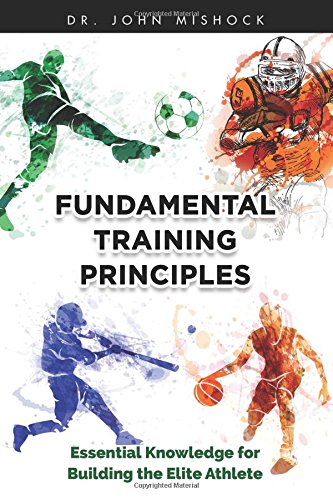
By Dr. John R. Mishock, PT, DPT, DC,
Owner, Mishock Physical Therapy & Associates
The Mishock Winter Workout Baseball and Softball Training Program is a home exercise program that prepares the athlete for pre-season baseball. It also can be used as a warm-up or training station in a winter work-out program or as an in-season training program. The ultimate goal is to prevent shoulder and arm injuries during the season while allowing the athlete to perform better in throwing and hitting. The program will consist of specific exercises (core, scapular stabilizers, rotator cuff, and arm), under-weight/over-weight baseball swings, and weighted throw and holds.
The importance of rotator cuff/scapular stabilization and core exercises
The rotator cuff, scapular, and core stabilizers are muscles around the torso and shoulder critical for performance in baseball or softball players. Throwing a baseball or softball is a violent activity leading to significant mechanical stress at the elbow and shoulder. To dissipate the extreme rotational and distraction forces at the shoulder during throwing, the posterior musculature of the shoulder has a critical role in slowing the fast-moving arm during a throw. Due to these forces, the deceleration phase of throwing is the most common point of throwing injury to the shoulder. Furthermore, as a protective mechanism, the body will not allow the arm acceleration to be greater than the degree to which it can decelerate. Thus, one limiting factor in throwing velocity is the posterior shoulder’s inability to eccentrically (lengthening muscle contraction) contract, controlling the decelerating arm. In other words, the arm won’t accelerate faster than it can decelerate. The rotator cuff and scapular stabilizers are the muscles that slow the arm down while providing a stable base for the throwing athlete. Strengthening these muscles will allow for greater throwing velocity and arm injury prevention.
The core muscles consist of the hips, low back, and abdominals. These muscles provide the base of stability, allowing the limbs to move with efficiency and power. A strong core also creates rotational sequencing force enabling the athlete to throw harder and hit further while preventing shoulder and arm injuries. For more information on the core’s importance, please go to my previous article, The “Core”: Preventing Injury and Improving Sports Performance in the Overhead Throwing Athlete at mishockpt.com/blog/ on my website mishockpt.com.
Under-weighted and over-weighted dry swings for improve bat speed and better swing mechanics
The athlete performs dry swings (baseball hitting swing without hitting a baseball) with a heavy bat and lighter bat at game speed. The scientific basis for the under-weighted/over-weighted dry swing program is to preferentially train fast-twitch type II a and b muscle fibers, thereby increasing bat speed. (1) (For a detailed review of muscle typing, go to train2playsports.com, the book “Fundamental Training Principles: Essential knowledge for building the elite athlete”. Fast-twitch muscle allows for explosive, powerful movements. By performing the swings, the athlete is also working on fine motor control and proper sequencing of the hitting mechanic, thereby reinforcing proper power transfer up the kinetic chain to the bat head.
Researches Sergo and Boatwright showed an 8% increase in swing speed when the control group took 100 swings per day, 3 days per week for 6 weeks (1,800 total swings). (2)
For best results, studies show that bat should be approximately 12-20% less or greater than the standard game bat. For example, if the player’s game bat is a 32 oz game bat, the player’s over-weight bat should not be greater than 38 oz, and the under-weight bat lighter than 26 oz. (3-7)
Throw and holds in preventing shoulder injury, building arm tolerance, and improving throwing mechanics
Physical therapists have been using throwing holds for decades as a rehabilitation tool for the shoulder. Throw and holds means that you go through the throwing motion without releasing the ball or weight. This training type works both a concentric (muscle shortening contraction during the act of accelerating the arm) and eccentric (muscle lengthening contraction in decelerating the arm) muscles of the shoulder.
By going through the throwing motion while holding onto the ball or weight, the arm decelerators (scapular and posterior rotator cuff muscles) are trained. This type of training also can improve throwing mechanics by working on the proper mechanical sequence used in throwing, which is the ultimate sports specific training.
In the only study to date on throwing holds, Henning and his colleges examined scapular muscle activation (upper, middle, and lower trapezius and serratus anterior muscles) using surface EMG (Electromyography) during a series of throws and hold (throwing without releasing) with two different ball weights (7oz and 12oz) in NCAA Division I softball players. Despite using a weighted ball, the hold exercises produced more significant muscle activations than a throw but no less stress on the shoulder or elbow. The authors concluded that the throw and hold might be a way to bridge the gap between traditional shoulder exercises and weighted baseball throwing programs. (7)
Click the link below for the Mishock Arm Care Training Circuit
including photos and details of each exercise
https://mishockpt.com/wp-content/uploads/Packet_Baseball-WinterWorkout_Mishock-6loc_2021-01-1.pdf
